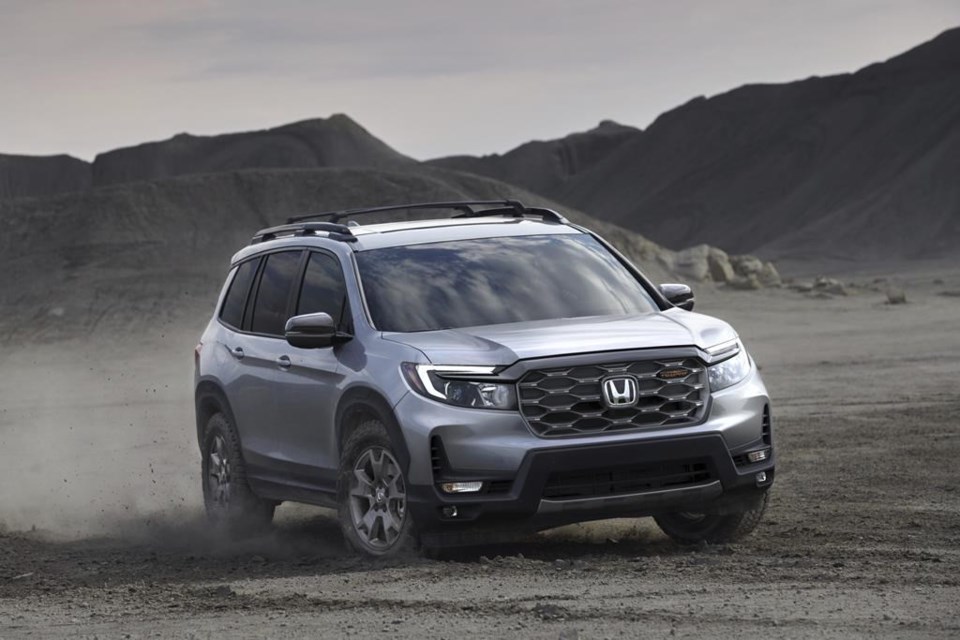Midsize SUVs with two rows of seating are an excellent option if you want something a little bigger than the ubiquitous small SUV. They have room for five and plenty of storage space but also are less expensive and easier to park than three-row SUVs. Among the available models, the and are worthy ambassadors.
Each delivers the SUV attributes people love, such as a commanding view of the road and all-terrain prowess. But which one is the better buy? ′ car experts compare them to find out.
ENGINES AND FUEL ECONOMY
Under the hood of the Passport is a 280-horsepower V6 that scoots you through traffic and makes easy work of highway merges. During testing, Edmunds noted its punchy acceleration that made it among the quickest in its class.
The Jeep technically holds the horsepower advantage courtesy of its 293-horsepower V6. However, Edmunds noted its acceleration is more leisurely. The Grand Cherokee’s 0-60 mph sprint required about 8.0 seconds in Edmunds testing versus 6.8 seconds in the Passport.
Jeep does offer the Grand Cherokee with a more powerful 375-horsepower plug-in hybrid powertrain called the 4xe. Yet its starting price of about $60,000 is more than $20,000 higher than the base V6 Grand Cherokee, and this pushes it into direct competition with luxury-badged rivals from the likes of BMW and Mercedes-Benz.
Also, considering Jeep is known for its outdoorsy image, it’s ironic the Passport is the one that comes with all-wheel drive as standard. In the Grand Cherokee’s lower trims adding all-wheel drive costs an additional $2,000.
When it comes to performance at the fuel pump, this is pretty much a wash. The Grand Cherokee with four-wheel drive gets an EPA-estimated 22 mpg combined, compared to 21 mpg combined in the Passport.
Winner: Honda Passport
DRIVING AND COMFORT
Both the Passport and Grand Cherokee inspire confidence in the driver thanks to their easy steering and strong brakes. They are also pretty comfortable, though Edmunds found the Grand Cherokee has a slight edge. It rides more smoothly over bumps, and its front seats are a little more supportive and comfy for long drives.
Also to the Jeep’s advantage is its dual-purpose nature; it’s equally at home on paved surfaces or when venturing off-road. The Passport TrailSport trim provides a decent amount of all-terrain capability but it’s not quite up to the potential of the Grand Cherokee.
Winner: Jeep Grand Cherokee
UTILITY AND TOWING
The Passport has 41.2 cubic feet of cargo space behind its rear seats, which is pretty good for a midsize SUV. The Grand Cherokee trails it a bit at 37.7 cubes. Edmunds has also found it’s a little easier to load heavy items into the Passport because of its lower cargo floor.
The Grand Cherokee counters with superior towing capability, however. It’s rated for a maximum of 6,200 pounds when properly equipped, compared to the Passport’s 5,000 pounds. An available towing package includes helpful features such as a Class IV trailer hitch, a load-leveling rear suspension and heavy-duty engine cooling.
Winner: tie
FEATURES AND VALUE
Edmunds found the quality and design of the Passport’s cabin to be exceptional; everything looks good and feels built to last. While its starting price is a little above the norm for two-row midsize SUVs, the number of standard features in the Honda helps offset the premium.
Inside there’s an 8-inch touchscreen with Apple CarPlay and Android Auto smartphone integration. Edmunds’ experts came away impressed by the Honda’s easy-to-reach controls and generous lineup of standard driver aids like rear cross-traffic alert and blind-spot warning.
The Grand Cherokee also ticks many of the right boxes when it comes to its interior design and extensive comfort and safety features. Its infotainment system is bigger than the Passport’s and one of the best thanks to its clear menus and crisp graphics.
Problems arise when scaling up to higher trim levels. The Grand Cherokee’s price spread is so vast, Edmunds questioned whether SUV shoppers might be inclined to simply opt for a luxury-badged competitor. Granted, niceties like massaging front seats and a booming 19-speaker McIntosh surround-sound stereo are beyond what the Passport offers. Except the Grand Cherokee comes off as providing more icing, whereas the Passport is the better cake.
Winner: Honda Passport
EDMUNDS SAYS
The Grand Cherokee provides the utility you’d expect from a Jeep SUV. It can also be impressively luxurious in its most expensive trim levels. But the Honda Passport is the better all-around choice. It does nearly everything the Jeep does but at a substantially lower price.
_______
This story was provided to by the automotive website .
is a contributor at Edmunds.
Nick Kurczewski, The Associated Press



